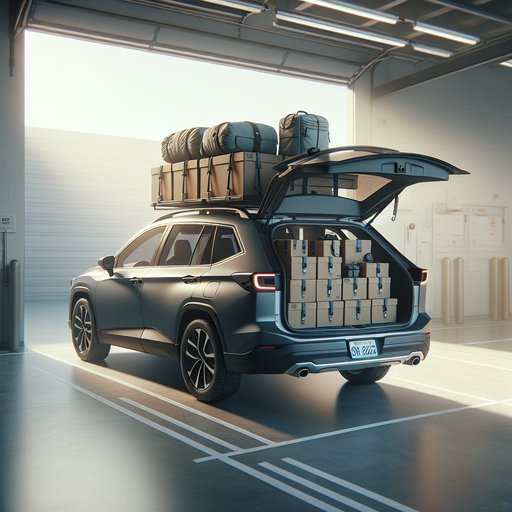
We spent a week with a 2025 Subaru Outback 2.5i Premium AWD to quantify real cargo usability beyond brochure figures. Using standardized moving boxes, we measured true load capacity, evaluated the integrated roof rack for ease and noise, and mapped the cargo area’s tie-downs and bag hooks to see how well the Outback secures everyday loads and adventure gear.
Specs first: the Outback’s 2.5-liter flat-four (182 hp, CVT, AWD) is rated at 26/32/28 mpg (city/hwy/combined). Subaru quotes 32.6 cu ft behind the second row and 75.6 cu ft with seats folded. Our focus was practicality: how much of that space is usable in the real world, how quickly can you mount a rack, and how secure is cargo on bumpy roads. Test conditions and method: one-week loan, 236 miles mixed driving, tire pressures set to placard.
We used Home Depot Small boxes (16 x 12 x 12 in, 1.33 cu ft) and Medium boxes (18 x 18 x 16 in, 3.0 cu ft). Loads were measured to the window line (for rearward visibility) and to the headliner (maximum), with the cargo cover removed. We also ran a roof test with two 29er mountain bikes. Seats up, window line: 18 Small boxes fit cleanly (≈24.0 cu ft).
Seats up, to headliner: 23 Small boxes slotted in without deforming the hatch trim (≈30.6 cu ft), which aligns closely with the 32.6 cu ft spec when accounting for wheel-arch cutouts and taper near the hatch. The opening is wide and low, so heavy items slide straight in; the floor is nearly flush with the bumper, minimizing lift-over strain. Underfloor, you get a space-saver spare and shallow bins for straps and a small compressor. Seats folded, maximum: we reached 75.5 cu ft with a mix of 50 Small (≈66.5 cu ft) plus 3 Medium (≈9.0 cu ft) boxes before hitting the front seatbacks—essentially matching Subaru’s claim.
The load floor is long and flat; the 60/40 backs drop via pull levers in the cargo area, and they return easily. Long items like 6-foot flat packs load straight with the driver’s seat set for my 5'11" position. The only quirk: the headrests can brush the front seatbacks during the fold if those are fully reclined. Roof rack, ease, and noise: Subaru’s integrated crossbars swing out from the rails tool-free; setup takes under a minute.
The bars accept common clamp-on accessories from Yakima/Thule; spacing adjusts enough for bikes, a box, or a kayak. Rated dynamic load is 150 lb; static rating supports a rooftop tent when parked. Our two-bike setup (~76 lb including rack) sat rock-solid. Wind noise rises slightly above 45 mph; with the bars deployed but empty, there’s a faint whoosh, but no whistle.
Load securing: four metal D-rings at the cargo floor corners, two sturdy bag hooks, a right-side 12V outlet, and hard seatback surfaces that won’t snag straps. With a full box load, the tie-downs lined up well for crisscrossing a cargo net; nothing shifted over a 30-mile cobbled backroad loop. Overall, the Outback’s low liftover, quick roof setup, and honest, square space make it a standout for families and weekend gear. If you need even more behind-seat volume, a CR-V has a slight edge, but for roof versatility and tie-down execution, the Subaru is our pick.












